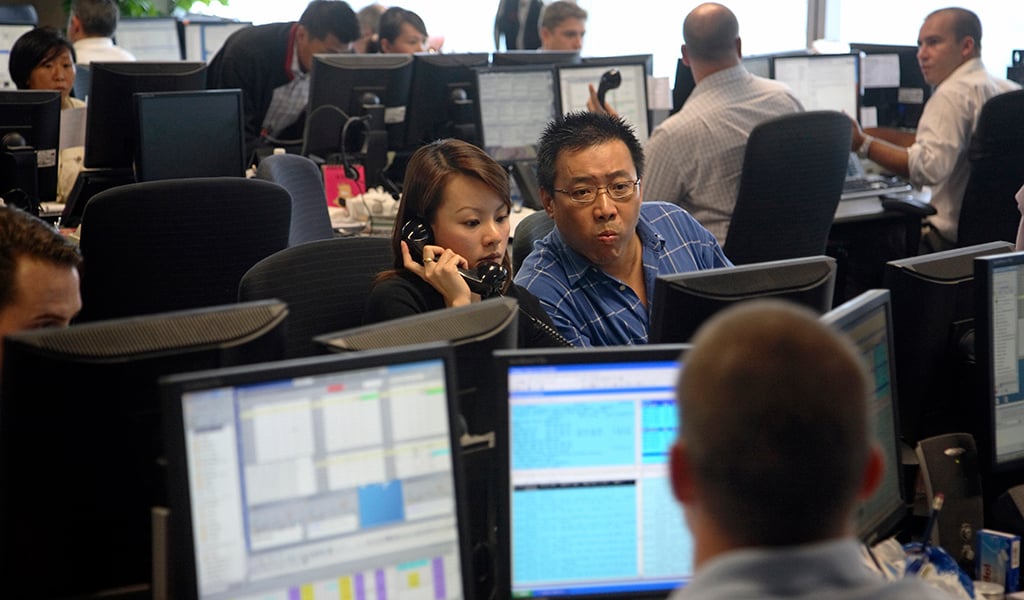October 3, 2017
Versions in عربي (Arabic) 文, (Chinese), Español (Spanish), Français (French),日本語 (Japanese), Русский (Russian)
[caption id="attachment_21527" align="alignnone" width="1024"] A trading floor in Singapore. Financial conditions provide valuable clues to the economic outlook and can improve the accuracy of forecasts (photo: Caro/Oberhaeuser/Newscom).[/caption]
A trading floor in Singapore. Financial conditions provide valuable clues to the economic outlook and can improve the accuracy of forecasts (photo: Caro/Oberhaeuser/Newscom).[/caption]
The global financial crisis showed that periods of robust growth and seeming calm in financial markets can be followed by a sudden surge in market volatility and an unexpected economic downdraft. That’s why it is so important for policy makers to keep a close watch on so-called financial conditions. These can include everything from bond yields and oil prices to foreign exchange rates and levels of domestic debt.
New analysis in the Global Financial Stability Report develops a novel tool that enables policy makers to use the information contained in financial conditions to quantify risks to future growth – which can help them take steps to forestall those risks.
Good times
In the run-up to the crisis, good times encouraged firms and households to engage in risky behavior. Low interest rates prompted firms and households to gorge on debt. Rising asset prices boosted the value of collateral as well as bank capital and profits, making it possible for banks to loosen underwriting standards and facilitating even more borrowing and lending. Eventually, recognition by markets of the risks inherent in the build-up of these vulnerabilities set off a rapid increase in funding costs and tightening of credit, which in turn triggered a cascade of defaults and bank failures that ended in the most severe recession since the 1930s.
How can our new tools help predict a downturn? Our analysis identifies some conditions that often appear to point to trouble within 12 months: rising market volatility, more risk-aversion among investors, and a widening of credit spreads—the difference in yield between ultra-safe securities such as US Treasury notes and other forms of debt. Over a period of two to three years, a higher level of debt and credit growth are better signals of tough economic times ahead.
Commodity prices
Of course, the importance of any given gauge depends on the type of economy. Higher borrowing costs for companies and worsening global risk sentiment are signs of trouble across the board. But while rising commodities prices are beneficial for exporters such as Australia, Canada, and Brazil, they increase the risk of a downturn in commodity-importing countries.
So, what are financial conditions signaling today? Credit spreads are low and so is volatility in markets, suggesting a relatively benign outlook. That’s the good news. But growing debt levels signal risks down the road. A rapid increase in credit spreads and greater market volatility could significantly worsen the outlook for global growth.
Fortunately, policy makers can use the tools we’ve developed to help them forecast risks and take appropriate actions. They can use so-called macroprudential measures to curb credit growth and reduce the risk of a slump. Such measures include requiring banks to hold more capital as a buffer against losses, and requiring families to make bigger down-payments on the homes they buy. Once a crisis appears imminent, options include cutting central bank policy rates as well as some of the measures that were deployed during the last crisis, such as asset-purchase programs and emergency liquidity facilities.





